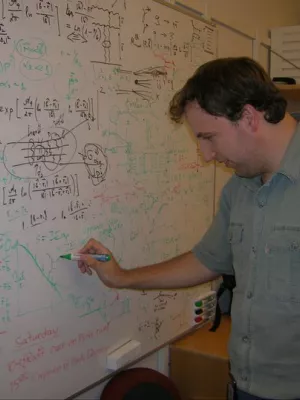
Roman Pasechnik
Senior lecturer

Chapter 5 Dark Matter and New Physics Beyond the Standard Model with LHAASO
Author
Summary, in English
In order to reveal the nature of dark matter, it is crucial to detect its non-gravitational interactions with the standard model particles. The traditional dark matter searches focused on the so-called weakly interacting massive particles. However, this paradigm is strongly constrained by the null results of current experiments with high precision. Therefore there is a renewed interest of searches for heavy dark matter particles above TeV scale. The Large High Altitude Air Shower Observatory (LHAASO) with large effective area and strong background rejection power is very suitable to investigate the gamma-ray signals induced by dark matter annihilation or decay above TeV scale. In this document, we review the theoretical motivations and background of heavy dark matter. We review the prospects of searching for the gamma-ray signals resulted from dark matter in the dwarf spheroidal satellites and Galactic halo for LHAASO, and present the projected sensitivities. We also review the prospects of searching for the axion-like particles, which are a kind of well motivated light pseudo-scalars, through the LHAASO measurement of the very high energy gamma-ray spectra of astrophysical sources.
Department/s
- Particle and nuclear physics
Publishing year
2022-03
Language
English
Publication/Series
Chinese Physics C
Volume
46
Issue
3
Document type
Journal article
Publisher
IOP Publishing
Topic
- Subatomic Physics
Keywords
- axion-like particle
- dark matter
- gamma-ray
Status
Published
ISBN/ISSN/Other
- ISSN: 1674-1137

